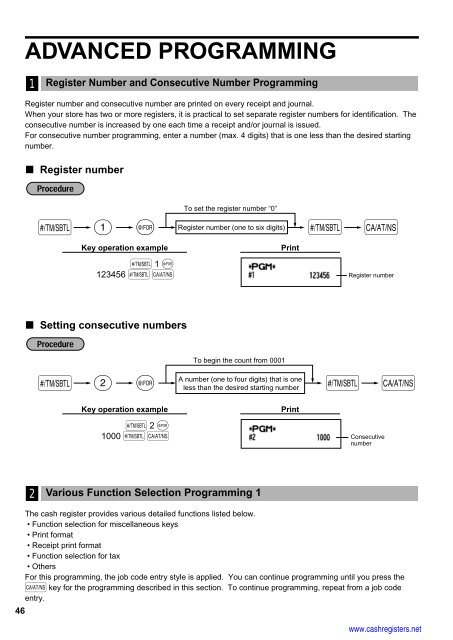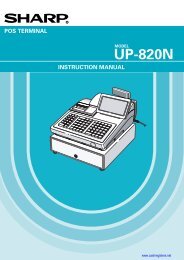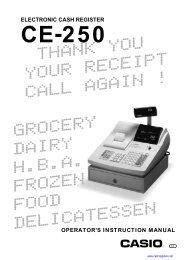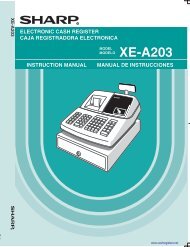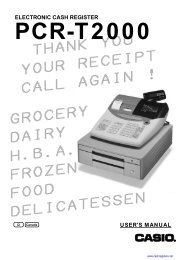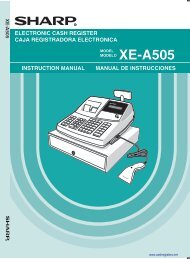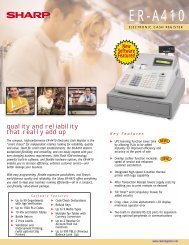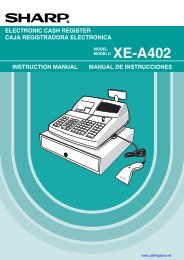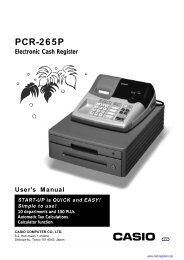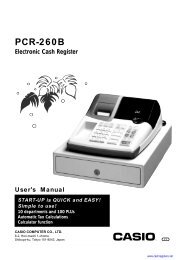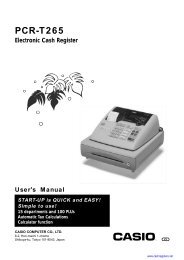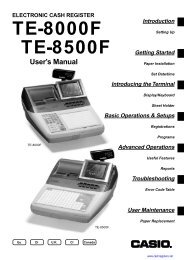1 - Cash Registers
1 - Cash Registers
1 - Cash Registers
You also want an ePaper? Increase the reach of your titles
YUMPU automatically turns print PDFs into web optimized ePapers that Google loves.
46<br />
ADVANCED PROGRAMMING<br />
1<br />
Register number and consecutive number are printed on every receipt and journal.<br />
When your store has two or more registers, it is practical to set separate register numbers for identification. The<br />
consecutive number is increased by one each time a receipt and/or journal is issued.<br />
For consecutive number programming, enter a number (max. 4 digits) that is one less than the desired starting<br />
number.<br />
2<br />
Register Number and Consecutive Number Programming<br />
Register number<br />
Key operation example<br />
s 1 @<br />
123456 sA<br />
Setting consecutive numbers<br />
Key operation example<br />
s 2 @<br />
1000 sA<br />
To set the register number “0”<br />
Register number (one to six digits)<br />
s 1 @ s A<br />
To begin the count from 0001<br />
Various Function Selection Programming 1<br />
Consecutive<br />
number<br />
The cash register provides various detailed functions listed below.<br />
• Function selection for miscellaneous keys<br />
• Print format<br />
• Receipt print format<br />
• Function selection for tax<br />
• Others<br />
For this programming, the job code entry style is applied. You can continue programming until you press the<br />
A key for the programming described in this section. To continue programming, repeat from a job code<br />
entry.<br />
Print<br />
Print<br />
Register number<br />
A number (one to four digits) that is one<br />
s 2 @ less than the desired starting number s A<br />
www.cashregisters.net


